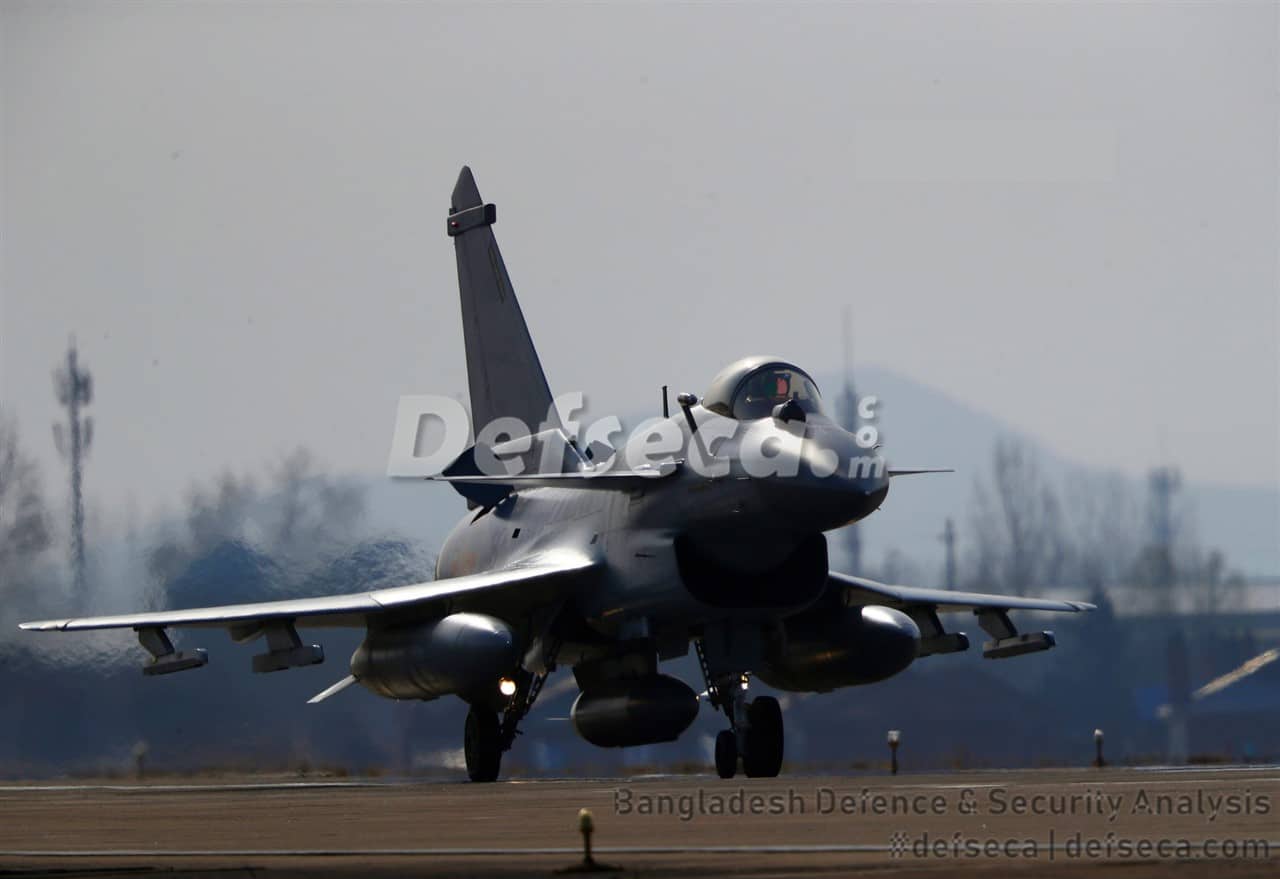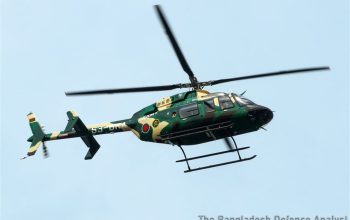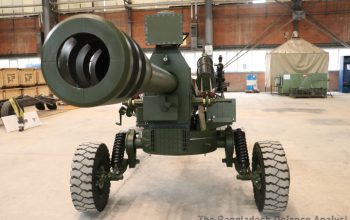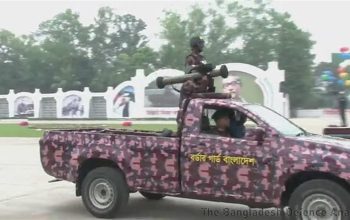The Bangladesh Air Force has an urgent requirement to replace its F-7 interceptor lineup, the oldest of which were inducted as early as the 1980’s.
Options are not limited with the market saturated by the choice of JF-17, F-16’s, Jas-39 and even twin-engine MiG-35’s however we examine why the J-10C is simply the best option to replace the F-7 fleet of the Bangladesh Air Force.
The J-10 entered service in 2006 and within the space of over a decade nearly 400 have been built for the Chinese Air Force (People’s Liberation Army Air Force), which is a lot more than the combined total of Swedish Gripen and French Rafale fighters.
The fighter aircraft is however comparable to the F-16 in every respect. It weighs 8,850 kg and has a maximum takeoff weight (MTOW) of 19,277 kg while its engine produces a thrust of 130kN.
Having offered the latest variant of the J-10 to the Bangladesh Air Force, the Chinese have guaranteed the aircraft’s inherent excellence. They highlighted its modern AESA radar and the ability to carry PL-15 long range air-to-air missile comparable to the MBDA Meteor in capability.
The Bangladesh Air Force was not interested in the J-10C until 2018 when its engineers decided to take another review of the aircraft. The main sticking points relates to the weak engine however the Chinese will tell you the WS-10B thrust-vectoring control engine is a success story in its own right. It allows the J-10 to perform Pugachev’s Cobra making it a supermanoeuvreable aircraft putting it in the same league as the Eurofighter Typhoon, Dassault Rafale and Saab Gripen.
The airframe of the J-10 is constructed from metal alloys and lightweight composite materials giving it high strength. It has a tail-less canard delta configuration providing the aircraft with very high agility at low speeds. Its large vertical tail fin also provides further stability to the aircraft in flight. Its signature air intake ramp is located underneath the fuselage and provides air supply to the engine. Given the use of diverterless intake the radar cross signature on the aircraft is further reduced compared to the J-10A or aircraft such as the Eurofighter Typhoon. Also under the fuselage are external hardpoints allowing for the carriage of various types of weaponry and drop-tanks.
The cockpit of the J-10 provides an-all round view for the pilot tucked away inside a two-piece bubble canopy. The aircraft incorporates a hands on throttle and stick (HOTAS) controls and zero-zero ejector seat.
The aerodynamically unstable means that the J-10 is equipped with a quadruplex-redundant fly-by-wire (FBW) flight control system that aids the pilot in flying the aircraft. It monitors pilot control inputs, prevents accident exiting during the flight envelope and applying too much pressure on the control input during high performance manoeuvre situations. Like the Eurofighter Typhoon such a system is required on canard winged fighters. If not present the large control surfaces would be capable of destroying the aircraft in flight at high speed if not kept in check by the flight control system (FCS).
The J-10C is equipped with three Multi-Function Displays (MFD) system and a holographic Head-Up Display (HUD). The advanced helmet mounted sight (HMS) is compatible with both the MFD and HUD. It is said to be superior to that of the Sukhoi HMS.
The fighter aircraft is armed with an internally fitted GSh-23 twin-barrel cannon located underneath the port side of the air intake. Its 11-external hardpoints allow for the mounting of a wide range of weapons using GDJ-5 twin munition adapters, which use NATO standard connections.
Aerial munitions such as PL-8, PL-9, PL-10 short-range air-to-air missiles (20 km), medium range radar guided PL-11 and PL-12 air-to-air missiles (100 km), long range PL-15 air-to-air missiles (300 km), unguided and precision guided munitions including laser guided bombs, YJ-91 anti-radiation missiles and anti-ship missiles make the J-10C a very potent air combat platform capable of multiple roles. The 1,200 km plus combat radius of the aircraft also means it can cover most parts of India, Myanmar and the Bay of Bengal making the J-10 a very potent deterrent in its own right.
The J-10C remains an attractive option for the Bangladesh Air Force with its lower price tag, a possible defence credit package to boot and ability to utilise the newly built aerial munitions plant constructed for the Bangladesh Air Force by Chinese companies allowing for assembly, maintenance and manufacturing of aerial munitions.
With all things considered the J-10C is the best bet for the Bangladesh Air Force. The aircraft can be customised to meet any technical requirements of the air force authorities. Given there is a requirement for 10 squadrons of fighter aircraft three to four squadrons of J-10 lightweight fighter aircraft would allow the Bangladesh Air Force to field the required numbers without having to spend over budget on Western and Russian alternatives.
A suggested mix would be 1:4 balance of Western/Chinese fighters for the Bangladesh Air Force.




